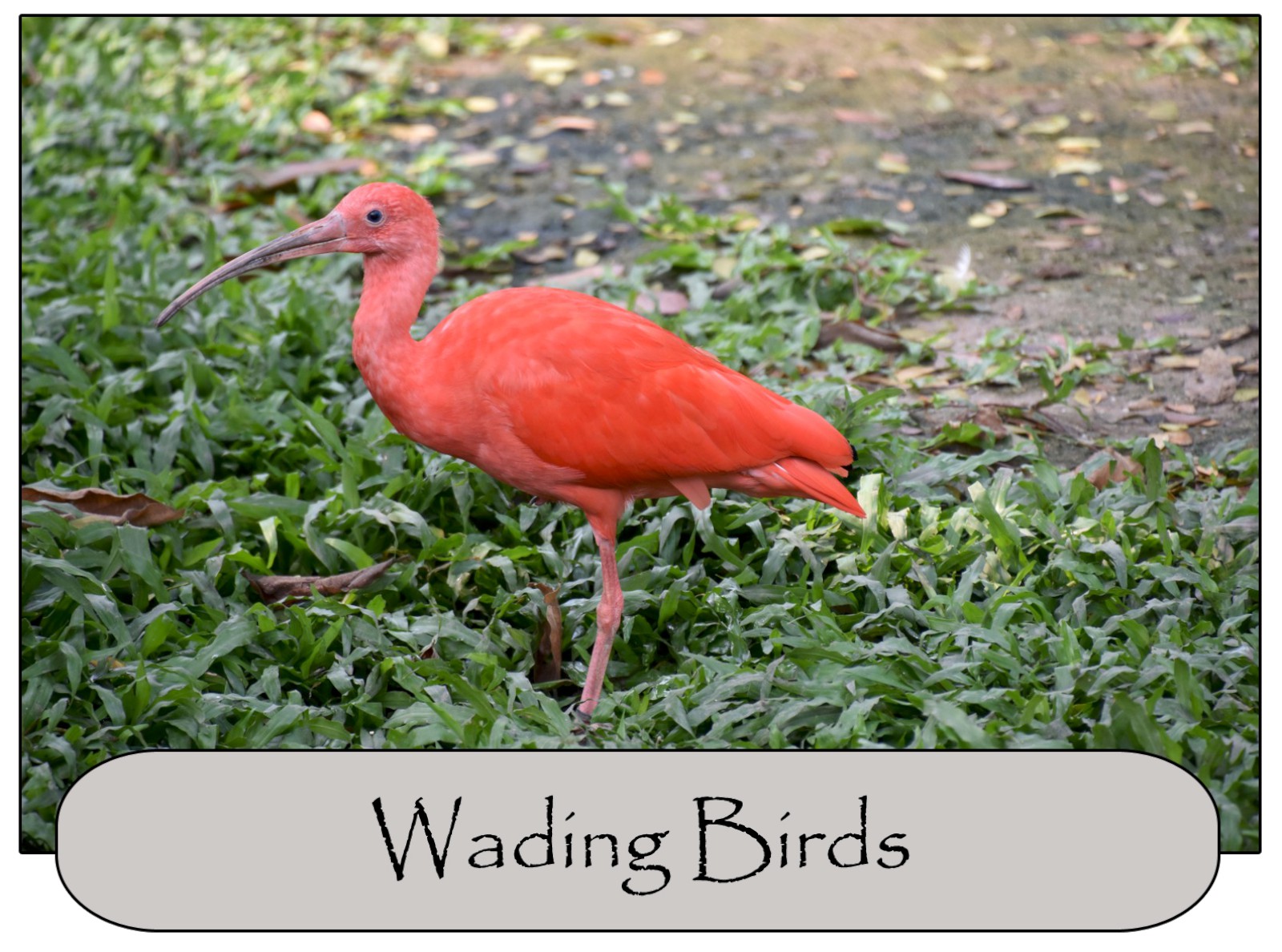The Roseate Spoonbill is a beautiful bird but it looks more like something from a cartoon than a creature that can be seen along the shore line of a marsh. They have bright pink feathers, red eyes, a partly bald head and a giant spoon shaped bill.
Roseate Spoonbills get their pink coloration from the foods they eat. Crustaceans and other aquatic invertebrates contain pigments called carotenoids that help turn their feathers pink. Just like some of us, they experience balding as they get older except instead of losing hair they lose feathers from the top of their heads.
Their preferred habitats are coastal marshes, lagoons, mudflats, and mangroves. They forage for food in shallow water with muddy bottom in both salt and fresh water. They normally feed in groups and sweep their spoonbills through shallow water snapping up crustaceans and fish.
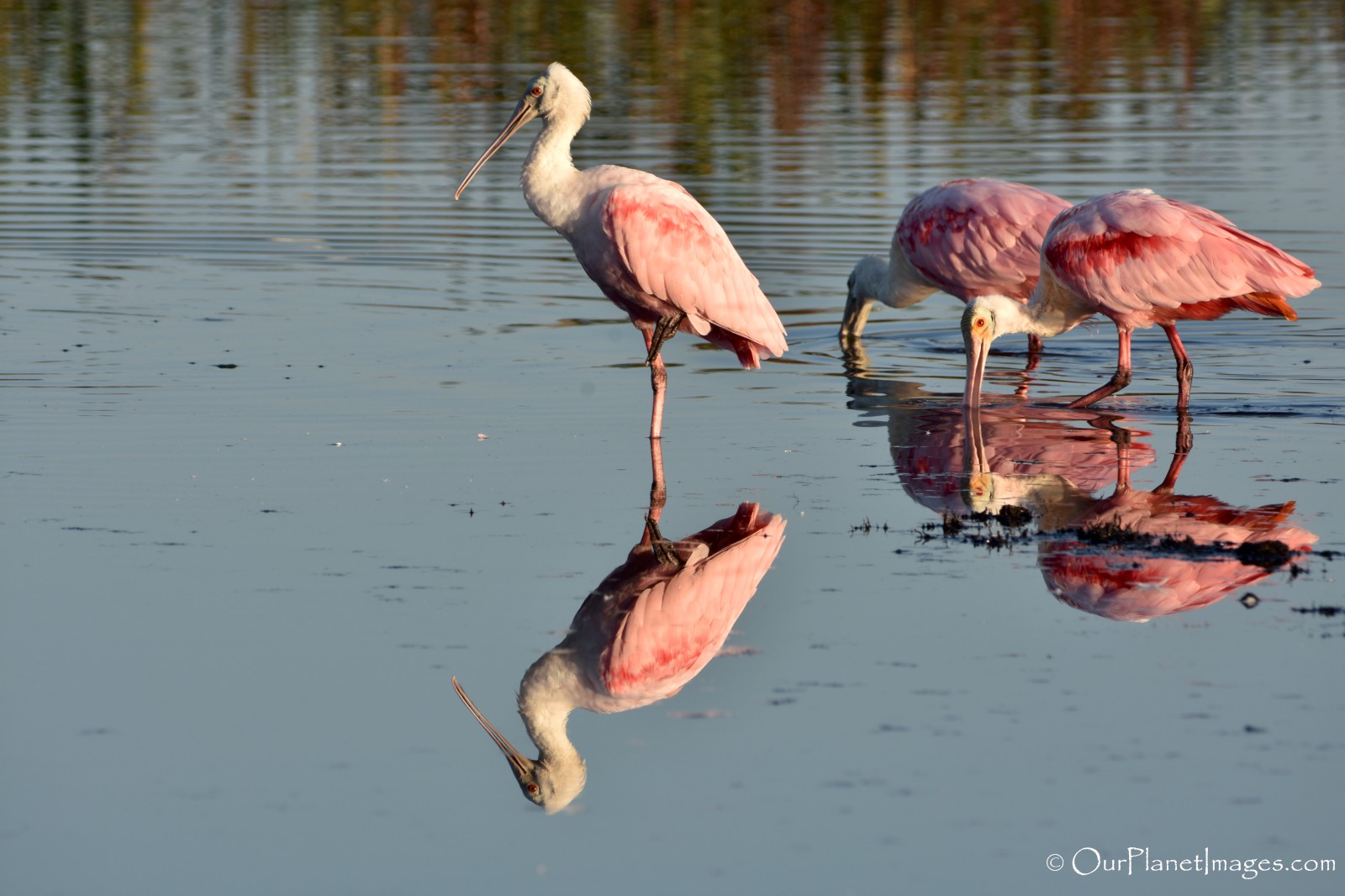
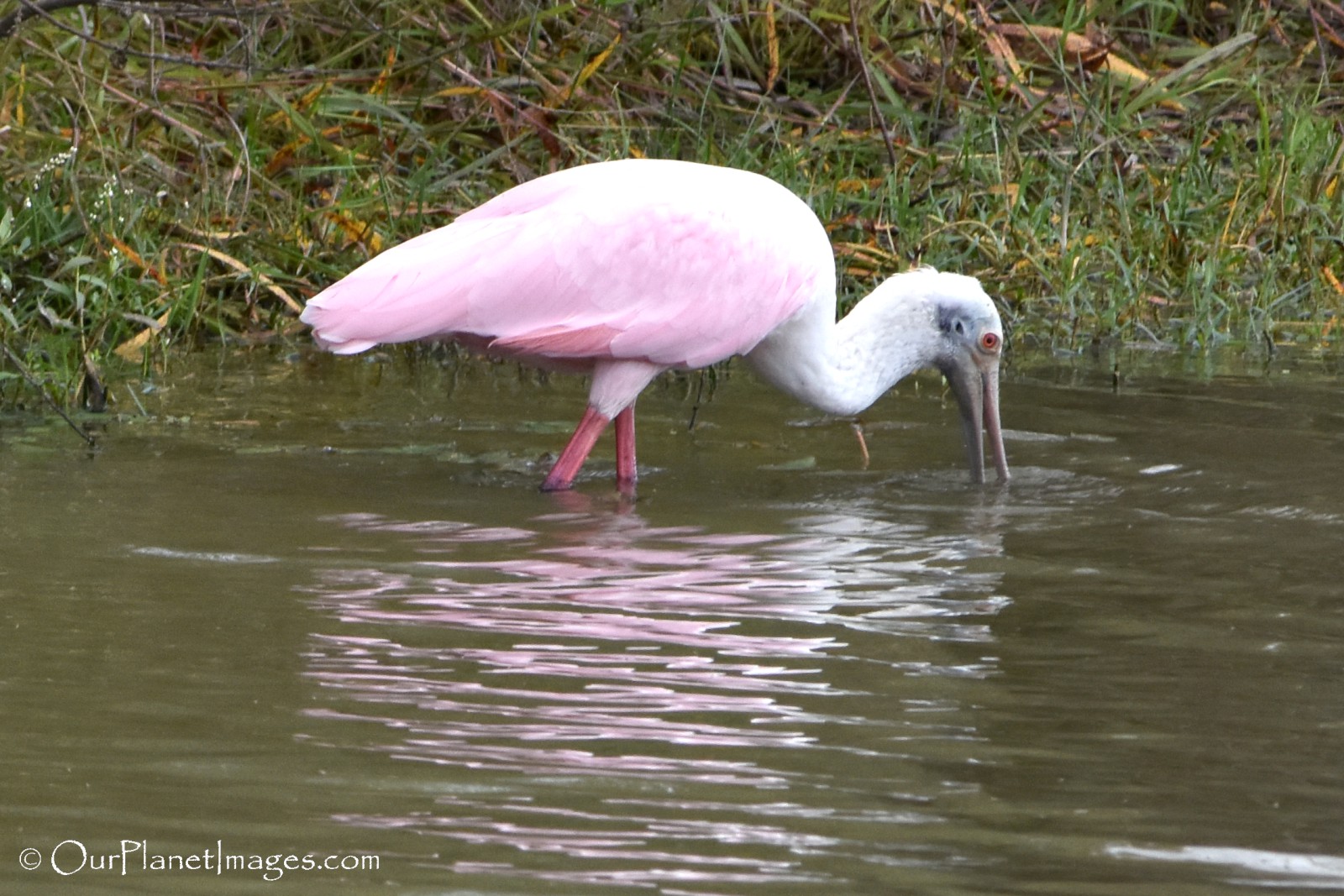
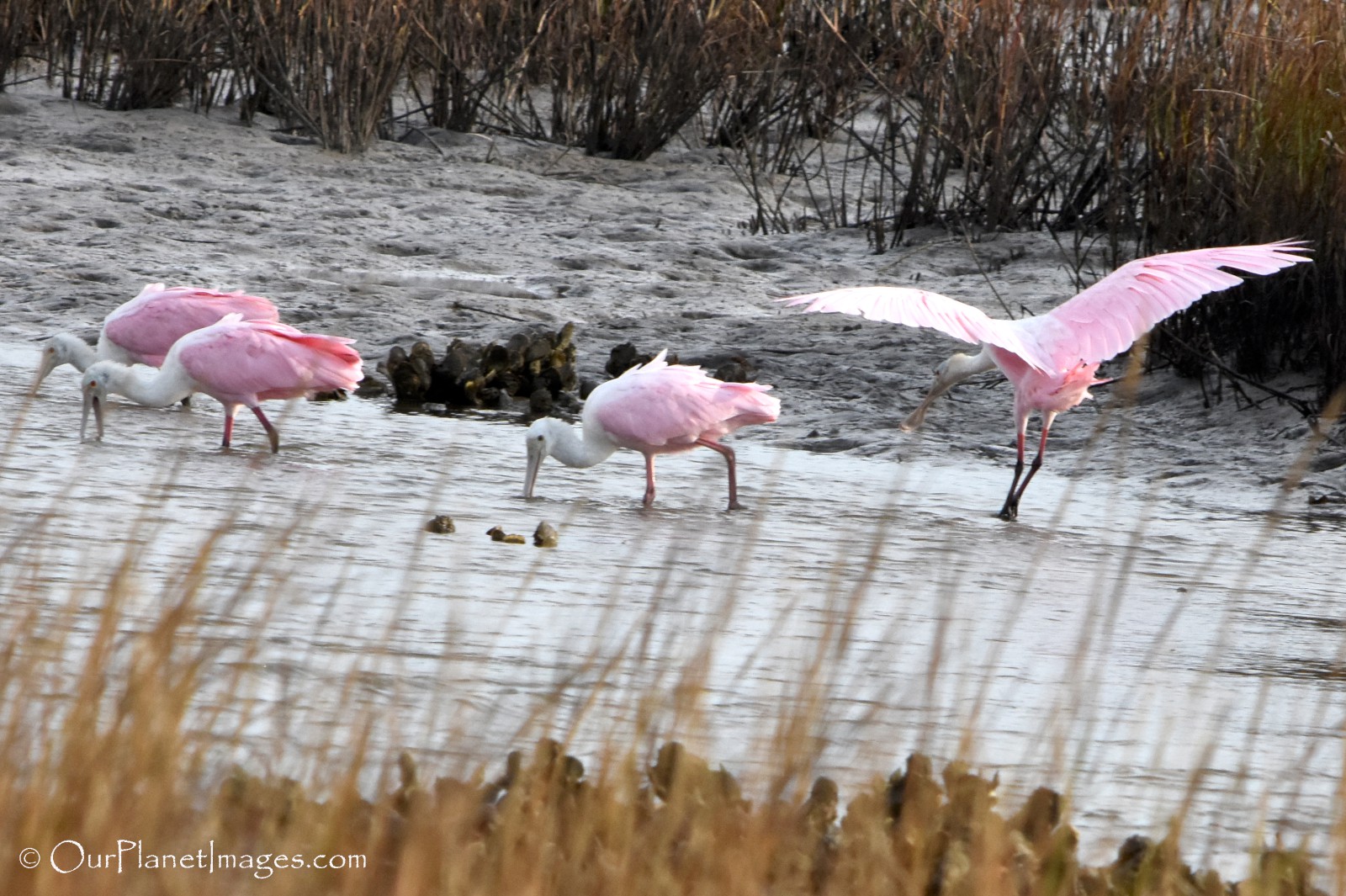
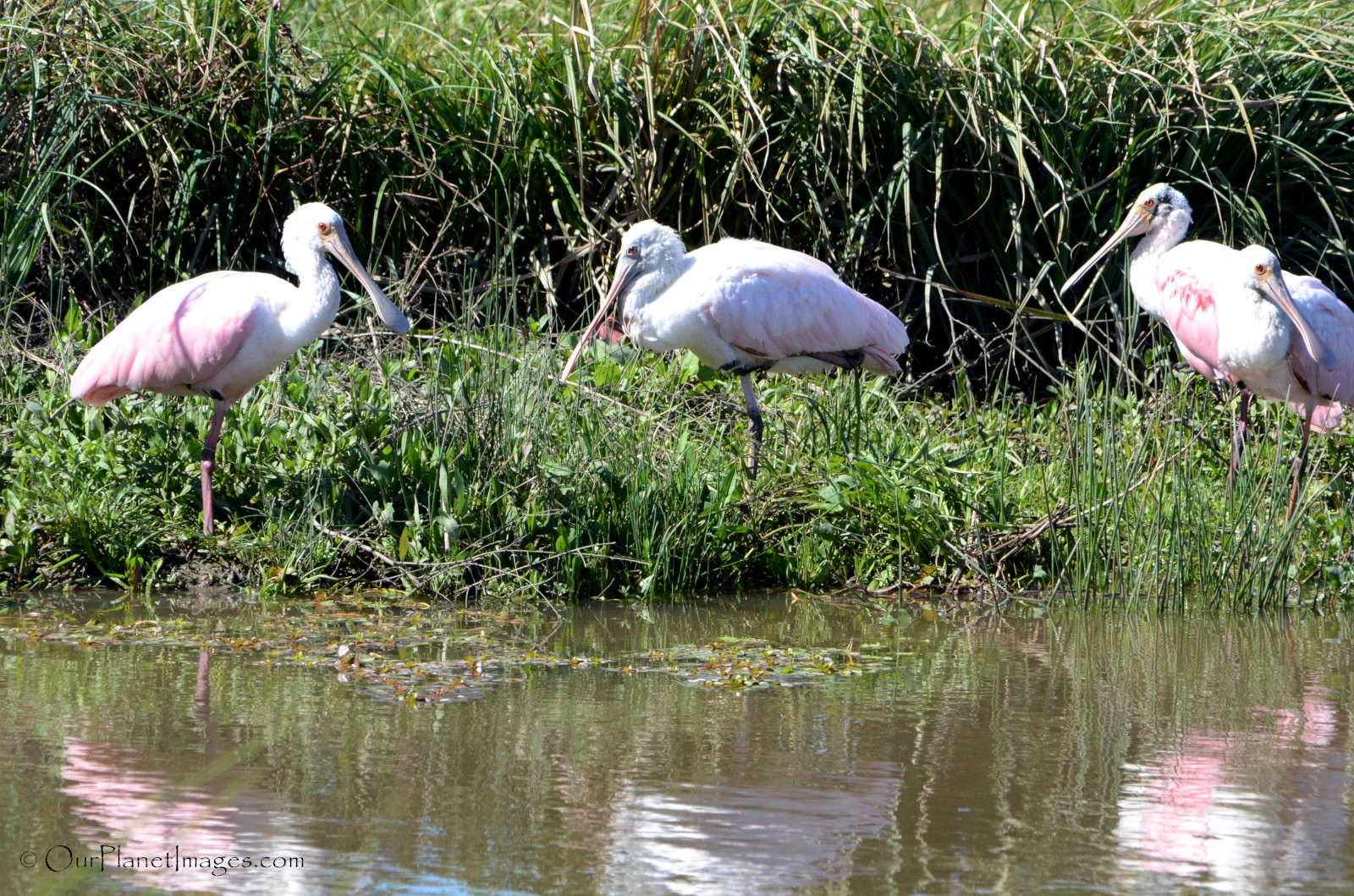
Roseate Spoonbills are social birds and they nest and roost in colonies. They are normally seen in trees and shrubs over water or near water.
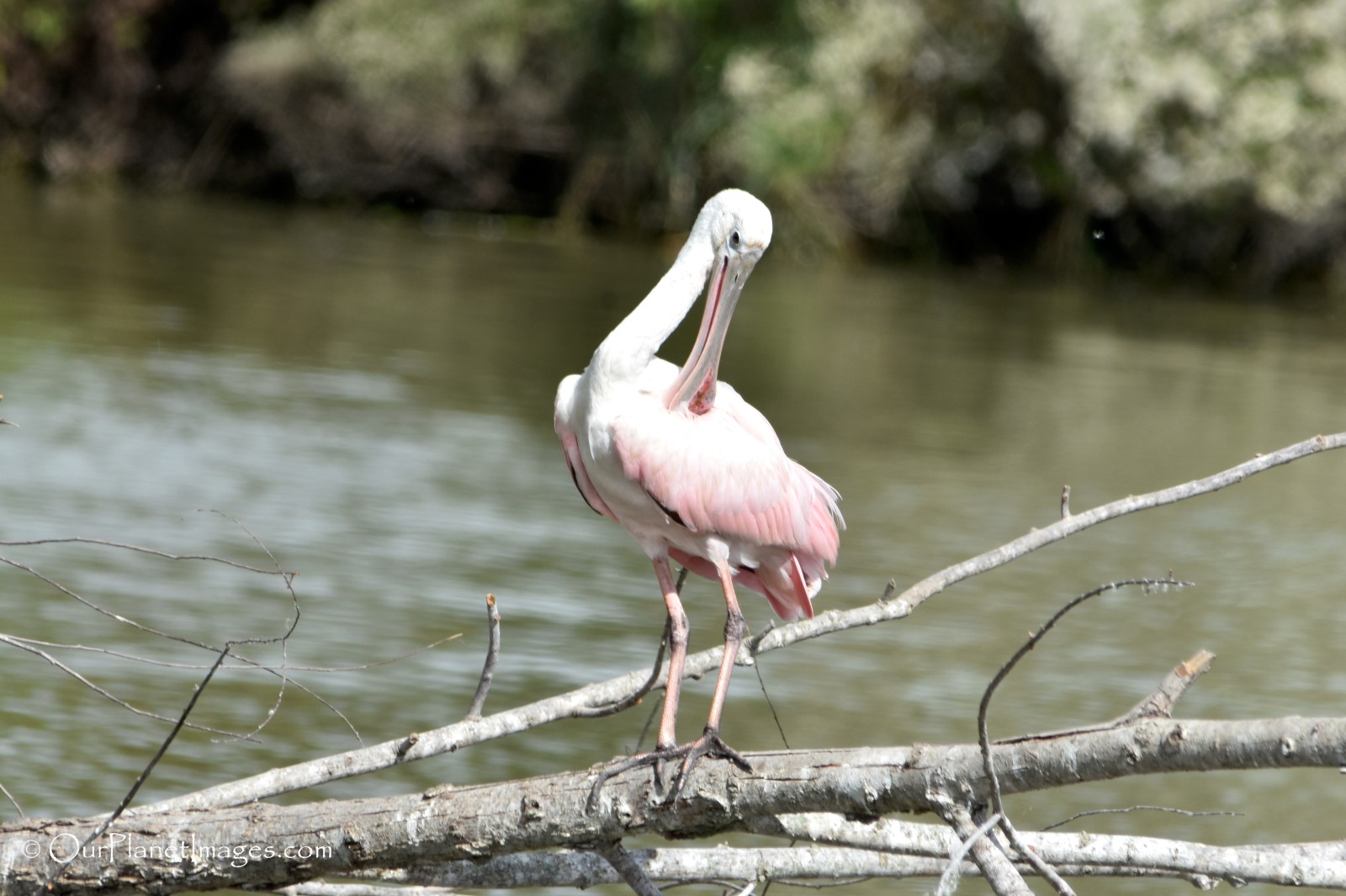
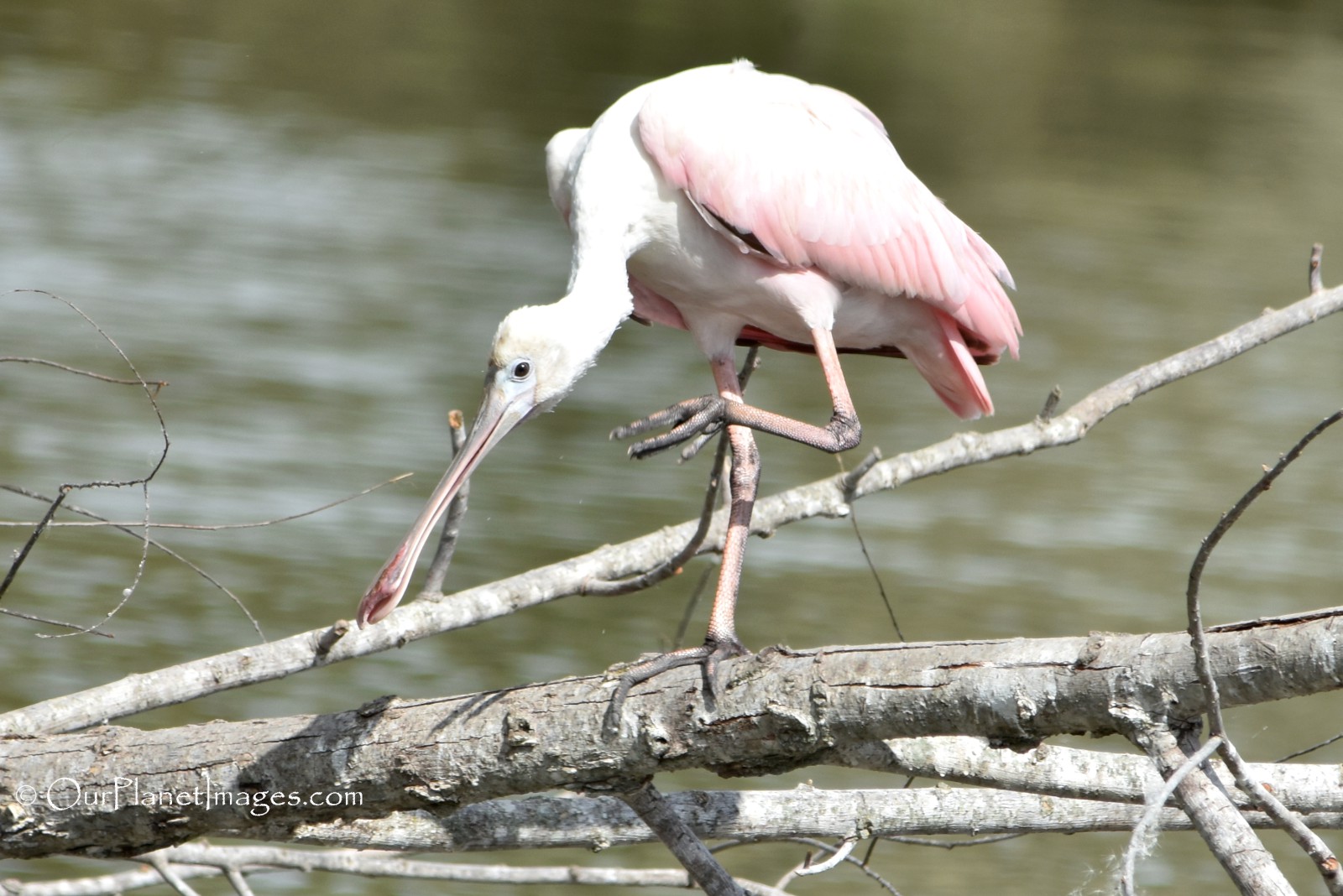
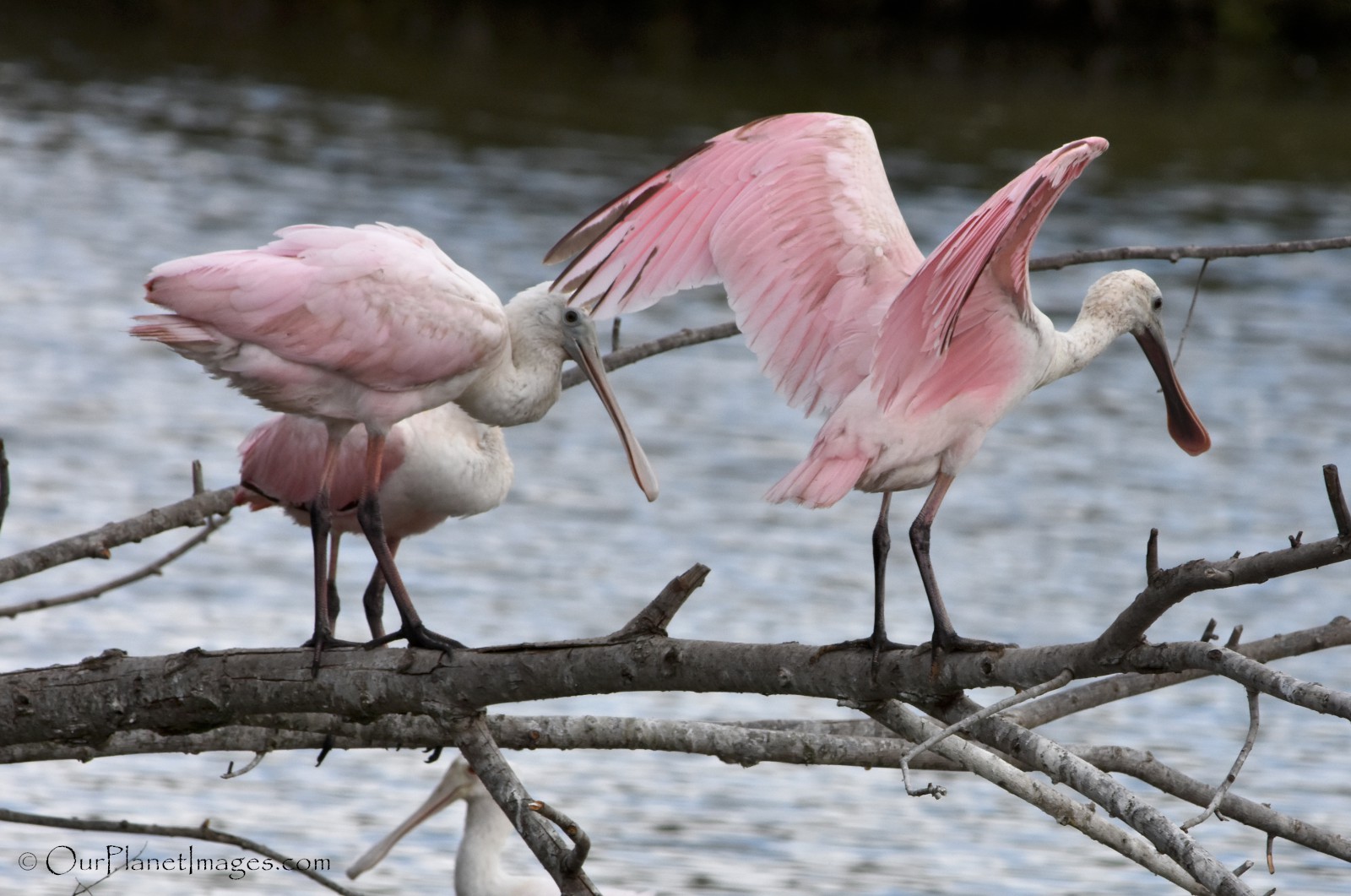
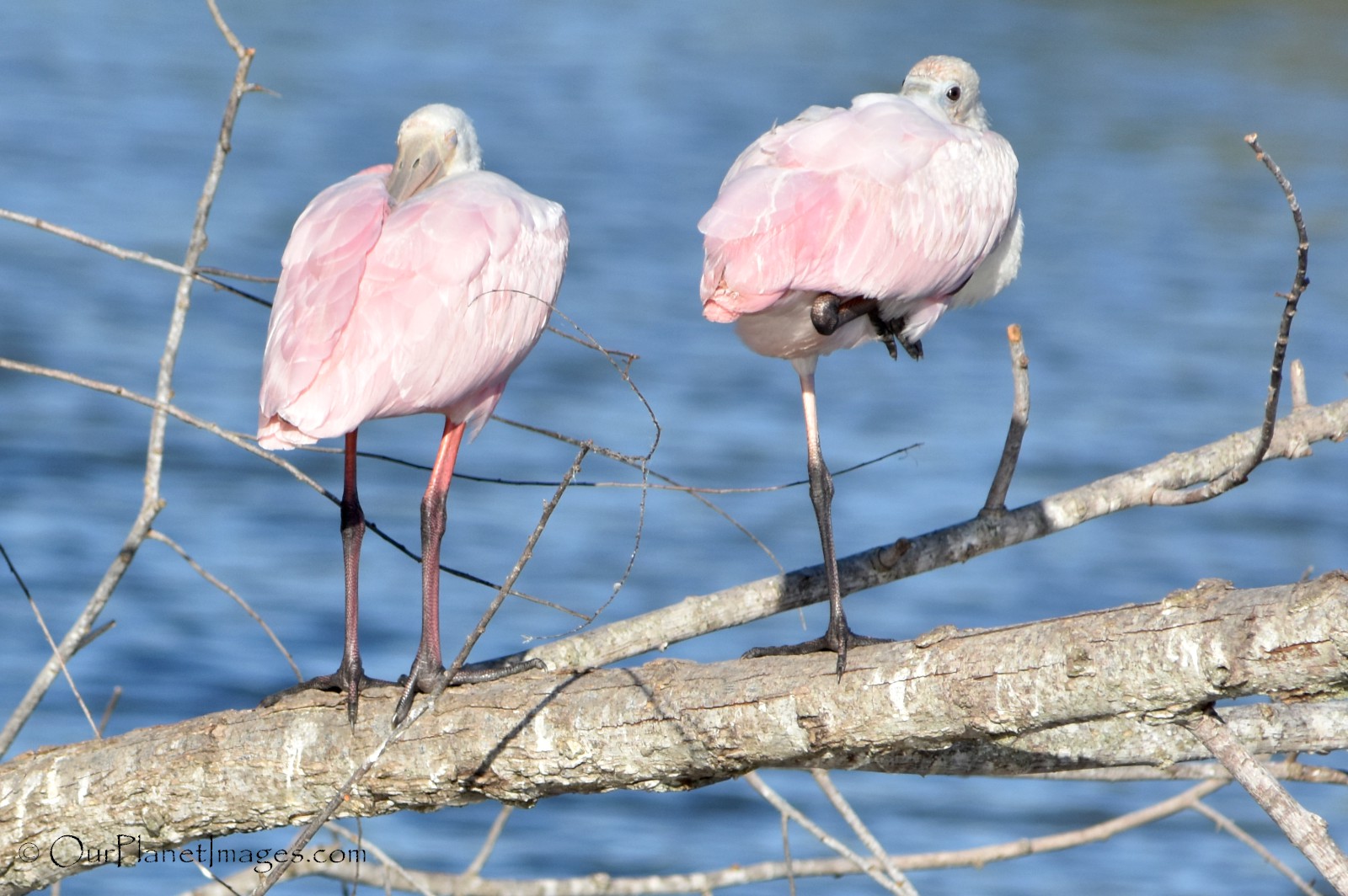
They can be seen flying to and from foraging or nesting areas with their necks outstretched.
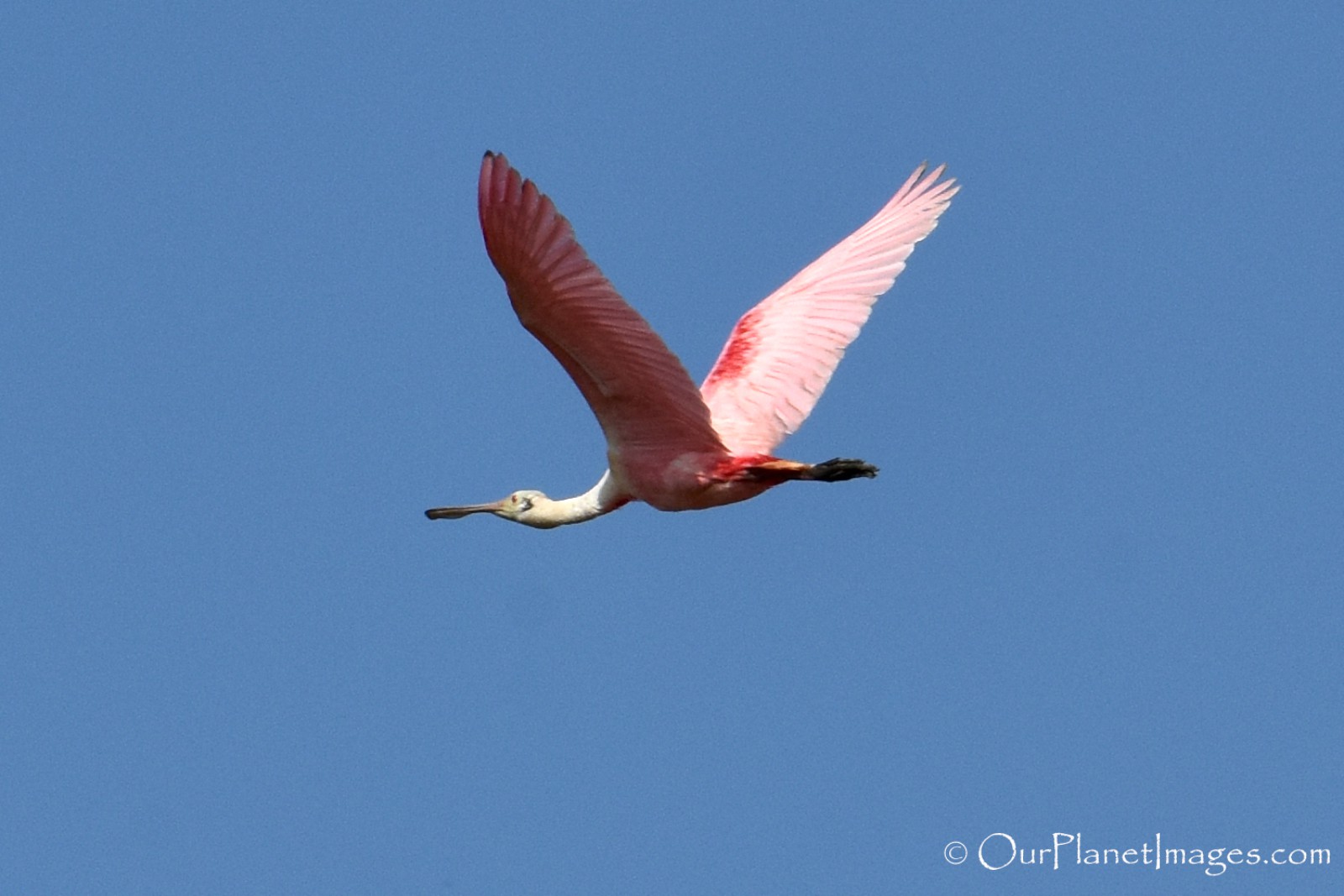

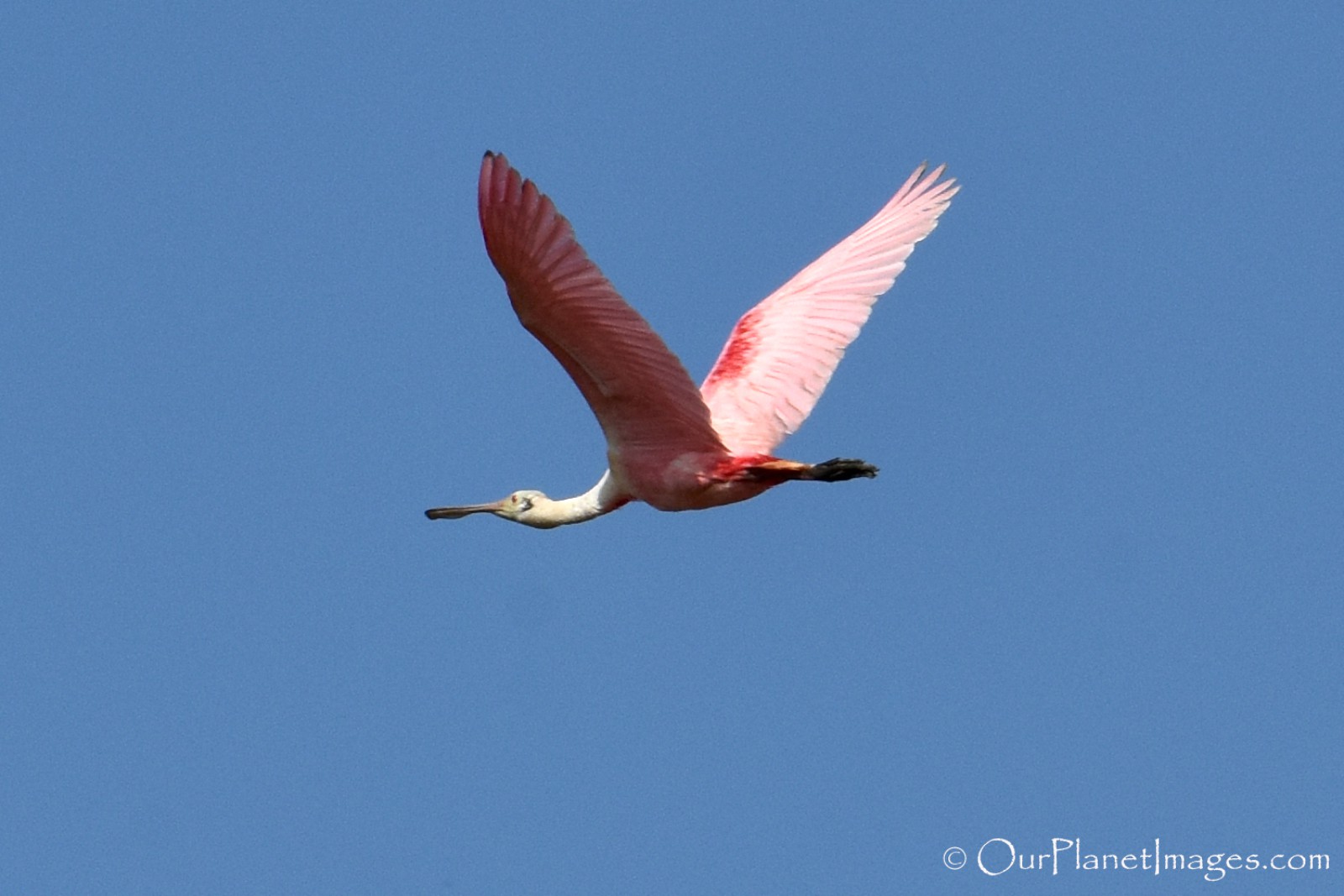
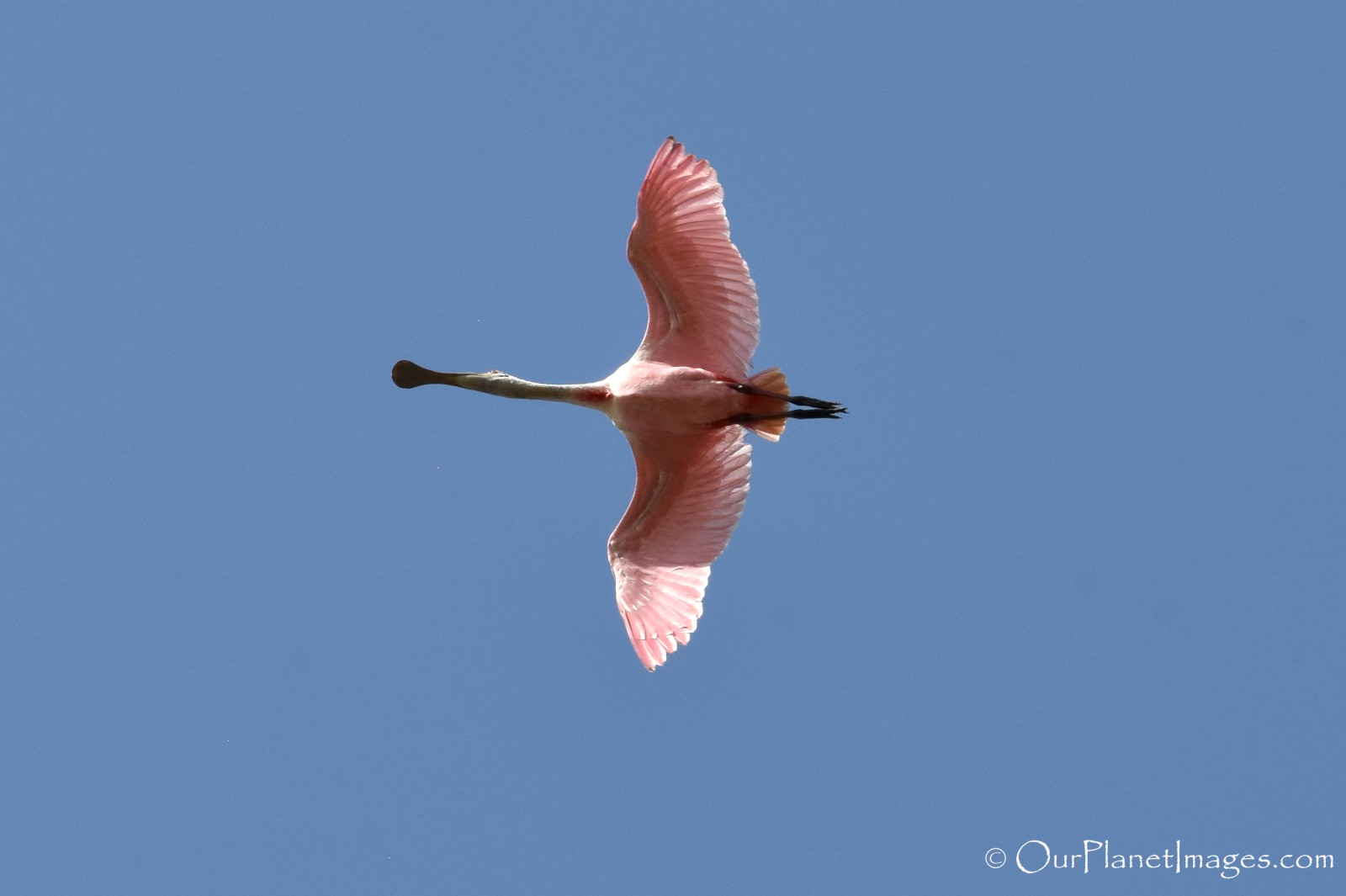
About this bird
Family: Spoonbills (There are only 6 species of spoonbills in the world and the Roseate is the only one found in the Americas. The others occur in Asia, Africa, Europe and Australia.)
Location: Year round resident in coastal Texas, Louisiana and Florida but is more common during the summer months with some migrating to Mexico for the winter.
Size: Reaches a height of up to 2.5 feet with a wing span or up to 4 feet and weighs between 2.5 to 4 lbs.
Lifespan: Up to 15 years
Diet: Diet is mostly small fish such as minnows but also eats shrimp, crayfish, crabs aquatic insects, mollusks and slugs. They will eat some plant material including roots and stems.


